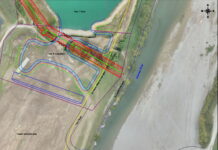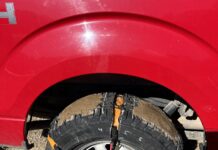
Contractors often use open ditches to convey water from one location to another on construction sites. An inherent problem with this practice is that the flow scours the soil along the path and adds more sediment into the flow. The solution to this scouring problem is to line the ditch or channel with a protective layer such as jute, vegetation or other erosion control matting. It is even more effective when polymers are used to capture and retain sediment on the liner before the flow reaches its terminal point.
Polymers are long-chain chemical compounds that attract and bind multiple soil particles into a single unit, large enough to drop out of the flow as sediment. Polymers are available in granular, logs and liquid forms. Polymers may also be positive, negative or neutrally charged. Anionic polymers such as anionic polyacrylamide have a low toxicity to aquatic organisms and cationic polymers like cationic polyacrylamide and chitosan have a high toxicity. Therefore, anionic polymers are most often used and allowed for environmental and stormwater applications.
Anionic polymer logs treat water passively, they are not toxic to people or the environment, and they can be used in a wide range of pH and temperatures. If polymer is still present at project completion, polyacrylamide logs and products are non-hazardous and do not require any special disposal considerations. All polymer treatments for erosion, sediment and water should be done in accordance with local, state and federal requirements.
Polymer Benefits in Lined Ditches
Used in conjunction with channel liners, polymers can treat a large volume of sediment-laden water. Installing polymer logs at the origin of flow is the key to success. Water flows over the log and the logs slowly dissolve. Soil particles adhere to the dissolved polymer and as water continues to flow a snowball effect occurs creating flocs to form larger masses that settle in quiescent areas on the liner. Enhanced sediment trapping on the liner can be achieved if jute netting is installed on the plastic liner (Figure 1). The polymer-sediment mass readily attaches itself to natural fibers such as jute, hemp and coir.
When used correctly and matched to a site’s specific soil and water chemistry, flocculants such as those provided by polymer logs can remove a significant amount of suspended sediment without substantial added costs or changes to existing infrastructure and BMPs.
Polymer logs can last a long time depending on site conditions such as flow rate, velocity and temperature. Contractors on low-flow and shorter duration projects can save money by purchasing smaller sizes or by cutting up a larger log into smaller units for use in other locations. Multiple small units placed in mesh baskets also provide more surface area than will one large unit.
Challenges in Lined Ditches
The desired effect of washing polymer from the block is reduced when it is exposed to air. The surface hardens which makes the block less soluble. Sediment can also cover the surface of the polymer log, creating a “skin.” If the logs become coated with sediment, they need to be brushed or washed off to continue working properly.
Conclusions
Polymer logs can work to significantly remove suspended clays and other sediment in water from construction activities. To ensure effective results, it is important to use the flocculants correctly and understand what polymer forms are best suited to each application.
[Editor’s Note: This is the second article in a series of three that address the use of polymers for erosion control on jobsites. The first article addressed the use of polymers on soil and the next article will discuss polymer applications for quiescent ponds.]
About the Experts
James W. Spotts, M.S., Ph.D., CPSS, CPESC, represents Southeast Environmental Consultants LLC. His company assists contractors having environmental problems during construction. Known as “Dr. Dirt,” Spotts is a long-time member of IECA.











